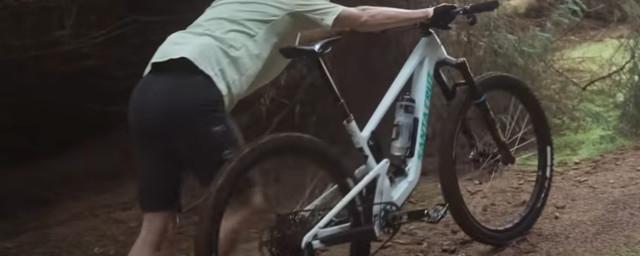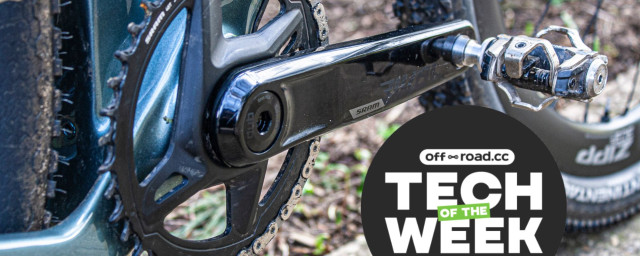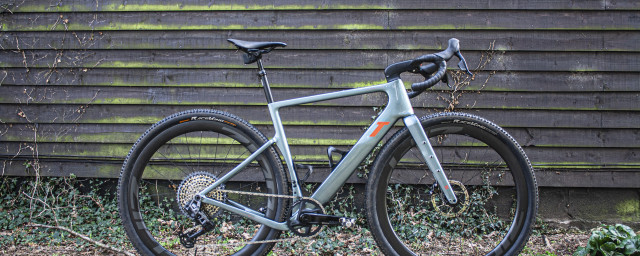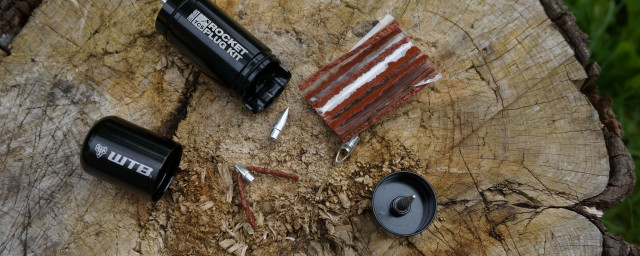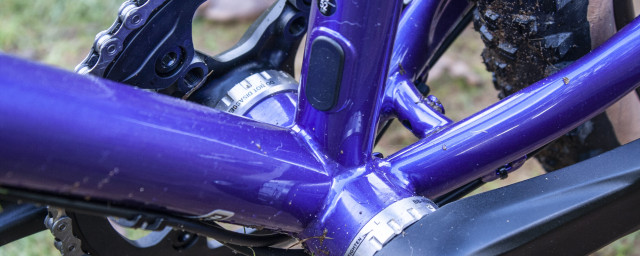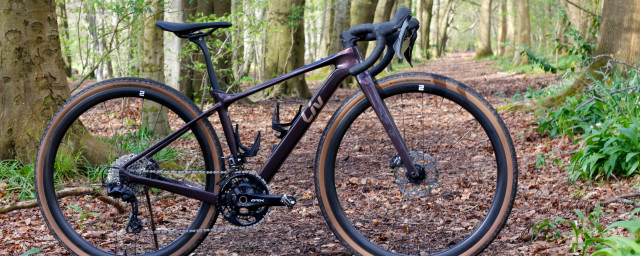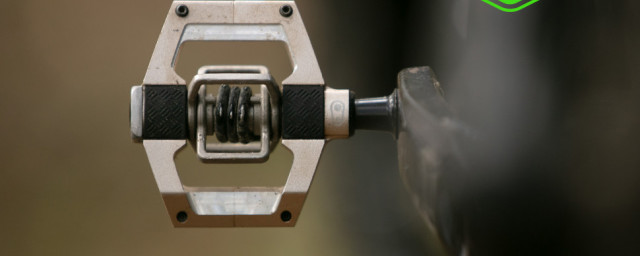High-pivot mountain bikes - everything you need to know

Recently, loads of bikes have been released with high-pivot suspension platforms. Norco, Cannondale, Trek, Forbidden and Hope are a few brands that have either moved to the eccentric suspension system or built their identities around idler pulleys and long chains. Compared to more traditional Horst, dual-link designs, and the more modern flex stay, high-pivot mountain bikes look more complicated and provide a ride unlike any other. In reality, while certainly different, how they work is very simple but well worth swatting up on before spending money on a high-pivot bike, so let’s dive into what makes a high-pivot mountain bike tick.
- Freeride mountain biking - everything you need to know
- 9 tips to keep your suspension running sweeter for longer
- Busting those suspension myths with Fox
While futuristic-looking, high-pivot mountain bikes are nothing new. A lot of the development happened in the noughties with bikes such as the V-Process aiding riders to navigate the ever-increasing demands of downhill courses. And Trek, known for bringing high-pivot tech to the Slash, actually used this system on the Session 10 in 2006. But there were earlier systems such as the GT GTS that was released in 1995.
In more recent years, high-pivot suspension platforms have experienced something of a renaissance which could be said to have been spearheaded by Scottish brand, Deviate upon the release of its Guide mountain bike in 2016.
Since then, Deviate has only made high-pivot bikes, so it’s safe to say that the folk behind the brand know what they’re doing. So we had a chat with Deviate’s Co-Founder, Chris Deverson to learn more about how high pivots work and why they’re becoming so popular.
How suspension works
Before going into the ins and outs of high pivots, let’s quickly go over how suspension works. Essentially, the point is to allow the wheels to move vertically independently of the frame to improve traction and comfort. Of course, a shock absorber must also get involved to dampen and control the travel that suspension provides.
To do that, every full-suspension mountain bike is built with a linkage, which can be a single or a series of pivots, often with a rocker link that attaches the rear wheel to the rear shock. There are a plethora of linkages or suspension platforms employed by every bike brand. They all do the same thing, but slightly differently as different linkages allow bike designers to sculpt how a bike rides and soaks up bumps while balancing pedalling performance. See our how brands build bikes piece to learn a little more about the decisions brands make towards suspension design.
This is where things like anti-squat, anti-rise, progression and leverage curves come into play but those are for another article. The axle path and anti-squat are important for high-pivot mountain bikes, although all of those other things are also present and accounted for with high-pivot bikes.
Briefly, a bike’s axle path is how we describe the direction in which a rear wheel moves as a bike compresses its suspension.
As for anti-squat, to put it simply, it's a measurement of how a suspension layout resists or allows for movement in the suspension caused when pedalling. It’s described with a percentage with 100 per cent anti-squat being zero movement in the suspension when pedalling. However, too much anti-squat can cause pedal kickback, another phrase to remember when it comes to high-pivot bikes.
Explaining axle path
So axle path is the direction of a wheel as a bike compresses through its suspension travel. Both ends of a full-suspension mountain bike technically have an axle path but generally, the term describes how the rear wheel moves. A bike’s axle path is dictated by the position of its main pivot which on a low pivot bike, is often just above the bottom bracket (in pink in the diagram below).
This is very much a layman’s way of explaining this as things can get a little more complicated from linkage to linkage but imagine drawing a big circle around the lower pivot that intersects your rear axle (drawn in pink below). This depicts the axle path of an average full-suspension mountain bike.
Almost all full-suspension mountain bikes have a rearward axle path to some effect but as you can see, a high-pivot mountain bike does things differently as it raises the main pivot higher on the seat tube, hence its name. Because of that, our imaginary circle (blue) is raised, thus more of its circumference is available for the rear axle to travel around. This is what makes a high-pivot bike so different as the axle path is considerably more rearward.
Rearward axle paths can be achieved through means other than raising the pivot but few do so as drastically as high-pivots. But note that linkages and axle paths are much more nuanced than this, so take this explanation as a simple visualisation.
What a high pivot does
A rearward axle path is desirable as it helps the rear wheel roll over bumps rather than get hooked up on them which can destroy momentum and feel pretty awful when riding. Almost all full-suspension mountain bikes have a rearward axle path of some degree and some brands are even tweaking their linkages to increase the rearward axle path – take Pivot and its most recent Switchblade for example. However, these rearward axle paths are minimal as you can see in the diagram above.
A high-pivot mountain bike is all about a rearward axle path. The higher a main pivot is, the more rearward an axle will travel as it hits full compression.
“Typically on conventional suspension layouts, the main pivot sits close to the chainring and this gives an efficient anti-squat performance. With a high pivot layout, it’s all about suspension performance on the trail so when impacts are coming in, they’re off-vertical and an impact forces rotation of the swingarm. It’s about turning that rotation force into the shock and damping it in a way in which the shock can do well.”
With an increased rearward axle path, the rear wheel mimics the direction of an impact which Deviate says gives the suspension more time to compress, which then frees the shock to do its work.
How does idler placement affect things?
A knock-on effect of a rearward axle path is that a bike’s chainstay will grow in length and that causes something known as pedal kickback. Pedal kickback can occur on all mountain bikes and it’s a result of a chain’s and a drivetrain’s influence on a suspension platform as it compresses deep in its travel and as the rear wheel moves away from the main pivot.
Essentially, the chain will pull on a crankset and force the pedals to backpedal slightly. This usually happens under big compressions and can feel harsh, or jarring through your feet. Because a high-pivot bike’s chainstay grows so much in length, this effect can be much more dramatic. However, some think of pedal kickback as a bit of a myth.
Regardless, this is where an idler pulley, a telltale characteristic of all modern high-pivot mountain bikes, comes into play. It can sometimes require the use of a longer chain than usual but by guiding the chain in the way it does, an idler pulley helps reduce the increased pedal kickback that’ll happen as a result of the greater rearward axle path and chainstay growth of a high-pivot bike. Some brands, such as Deviate, can then place the idler in such a way in which pedal kickback won't happen.
However, an idler has a second and arguably more important role as the pulley is required to tune anti-squat performance and even the smallest of changes in its location can have a large influence on how that balance between anti-squat and pedal kickback sits.
Why is a rearward axle path better?
“If you point towards a rock or root, the height of the rock determines where it hits the wheel first which then defines the angle of the impact. You want the wheelpath to follow the force vector that then rotates the swingarm which then goes into the shock so it can do its job.”
A high-pivot mountain bike is all about improving suspension performance. Generally, high-pivot bikes deal with bumps more effectively than conventional designs as they allow the rear wheel to roll over an impact better. This can then provide more control and comfort at higher speeds. This is why such designs have been increasingly common on downhill mountain bikes.
Are there any downsides to a high pivot?
“There’s more hardware that’s required to keep the pedalling performance which in itself needs a stiff idler design so the bike doesn’t have a flexy feel to it. There’s also drag that comes into it.”
More hardware also means more maintenance as the idler pulley will eventually wear, as will the bearing, or bearings that it rolls on. Some designs also require the user to purchase more than one chain as one isn’t long enough to snake around the idler and the drivetrain.
And to those new to riding high pivot bikes, the exaggerated rearward axle path and chainstay growth compared to regular mountain bikes can feel peculiar to ride to start.
“Packaging is quite tricky because we’re trying to keep the leverage ratios between 2 and 3 and high pivot bikes tend to have quite compact designs. With conventional bikes you have between the bottom bracket and the top tube to spread out forces to get their leverage ratio. We don’t have that so these bikes tend to have quite compact designs and a lot of high-pivot bikes have that low-mounted shock for this”
Why are high pivots becoming so popular?
“Because they’re good, they work. I think it’s become something for the masses now and people are realising the benefits are there.”
Over the past 10 or so years, a lot of work has gone into perfecting mountain bike geometry and only now bikes have started to plateau in that respect. Now we're seeing interesting things happen with high pivots and rearward axle paths to improve suspension performance. And of course, that performance lends itself very well towards race scenarios where every opportunity to save energy is key.
Are high-pivot mountain bikes better?
Mountain biking is all about navigating bumpy and challenging terrain and as high pivot mountain bikes do a better job of absorbing bumps without limiting momentum they make an awful lot of sense. And even more so if you’re looking to take on such riding with as much composure and speed as possible. Because of the increased control they provide, riding at speed with confidence comes much more naturally. And because the shock is freer to do its job properly, a high pivot bike can provide more rear wheel grip. But these bikes do have their downsides, as any mountain bike does.
The most notable one lies within the growth of the chainstay I’ve been banging on about. Having a chainstay grow so much as a bike compresses through its suspension is a unique feeling that not everyone will get on with, especially if you’re new to the sport. For those with more experience under their belt, it’ll take some time to get to grips with your first high-pivot mountain bike as you learn how it reacts to certain inputs. It effectively lengths the wheelbase as you push it into a corner, which is something to get your head around.
High-pivot bikes make a serious case if your riding is often very technical and very bumpy, as the suspension works effectively to smooth the trail out. If you’re most regularly riding smoother and more manicured trails, a bike with a high pivot might be overkill.








